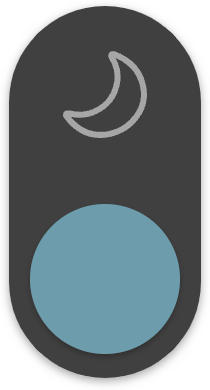
At the men's javelin final held on the morning of Nov. 18, two robot dogs shuttled back and forth between the starting point and the endpoint in sync with the competition rhythm. Their quick, small-step running allowed the javelin to be repositioned within 10 seconds.
Compared to the robot dogs used in the previous Hangzhou Asian Games, the ones deployed at the 15th National Games track and field arena are faster, larger, capable of carrying heavier loads, and more precise in their movements. Their duties have also expanded from the discus event to multiple events such as the javelin and hammer throw.
This marks the first large-scale application of robot dogs in a major sports event. With their agile movements, they efficiently completed equipment transport tasks, injecting "technological vitality" into the competition.
Operating around the clock without interruption
A Wen Wei Po reporter observed at the scene that as soon as an athlete completed a throw, the robot dogs, which had been on standby outside the competition marking line, quickly responded. They precisely approached the volunteers, and within just one second, the javelin was securely placed on the robot dogs' "backpacks." Then, like arrows released from a bow, the robot dogs swiftly ran toward the starting point, completing the repositioning of the javelin in about 10 seconds.
In addition to the javelin event, the reporter also spotted the busy robot dogs in multiple events, including the women's hammer throw final and the women's discus qualifiers. During the competitions, aside from appreciating the athletes' performances, the audience also directed their attention and camera lenses toward these robot dogs.
"In the past, volunteers had to run long distances to retrieve the equipment. For heavy items like the hammer throw, two people had to work together. Now, the robot dogs can complete the round trip in about one minute, significantly speeding up the competition pace," said an on-site volunteer.
The reporter learned that the robot dogs at the Guangdong Olympic Sports Center Stadium track and field venue were jointly developed and produced by Guangzhou Dynamics Robotics and Guangdong Xiulian Technology. Li Zhipeng, the joint technical director of the two companies, explained that the robot dogs deployed for this event are intelligent equipment specifically tailored for the long-throw events of the National Games.
According to Li, he core highlight lies in addressing practical pain points in competition scenarios. To meet the characteristics of long-throw events, where equipment is heavy and transport is frequent, the robot dogs have a load capacity of 40 to 60 kilograms, fully satisfying the transport needs for javelins, discuses, and various specifications of men's and women's hammer throws.
At the same time, considering the long duration of the events, the team optimized the software algorithms to extend the robot dogs' battery life to over three hours. Coupled with a rotation model of "one working, one on standby," this ensures uninterrupted service throughout the day's competitions. Their maximum speed of 6 meters per second fully meets the efficiency requirements for on-field transport.
In the future, they will be capable of autonomous navigation and operation.
It is worth mentioning that, compared to similar applications at the Hangzhou Asian Games, the robot dogs at this National Games have achieved three major upgrades: First, they integrate the transport needs of three long-throw events—javelin, hammer throw, and discus—for the first time. Through a "one-key multi-use" structural design, the same robot dog can adapt to completely different specifications of equipment, such as the hammer throw and javelin. Second, a larger body design has been adopted, significantly improving load capacity and endurance compared to before, thoroughly solving the challenge of energy consumption balance during prolonged running. Third, the optimized bidirectional buckle device allows referees and volunteers to quickly load and unload equipment, significantly enhancing operational convenience.
However, Li explained that the robot dogs still require operator intervention to execute tasks. Currently, the team is developing autonomous navigation functions for the robot dogs, which will enable fully automated operations in the future.
"This technology is not overly complex, and we believe it can be achieved in the near future."
Only 1 to 2 operators are needed per competition
Despite appearing intelligent and complex, operating the robot dogs is quite simple. According to volunteers, those operating these high-tech devices do not require lengthy or complicated training. Some volunteers even learned they would be operating robots only after arriving at the venue. Li stated that volunteers quickly got the hang of operating the robot dogs using remote controls. Only one or two staff members are needed per competition, and the entire process is as intuitive as using a game controller.
"The 15th National Games is the first domestic official sports event to employ robot dogs for transport work on a large scale. In the future, the service scope of intelligent robots like these robot dogs in sports events will further expand, deeply empowering various events and contributing to the intelligent and efficient development of China's sports industry," Li said.
(Source: Wen Wei Po; Journalist: Ao Minhui; English Editor: Darius)
Related News:
Journalist's View | How difficult is it to be a graceful loser?




















Comment